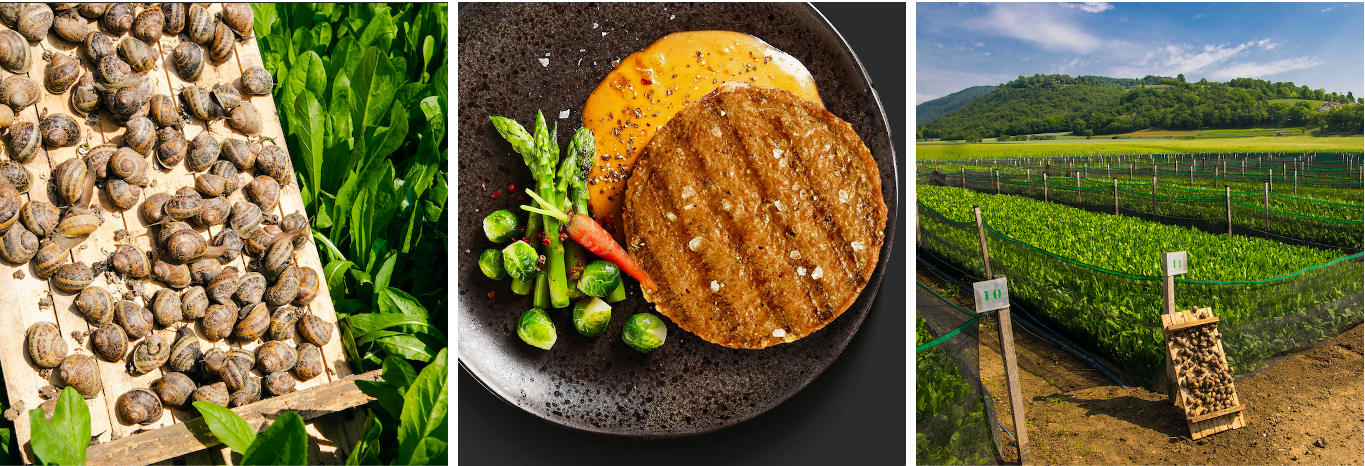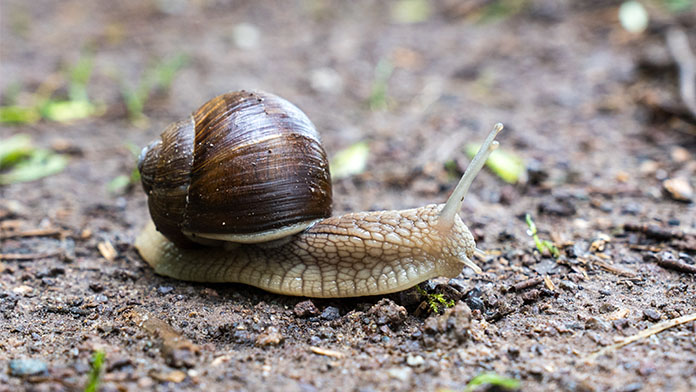More slow food than this has never been seen. There snailslow animal par excellence, seems to be theenvironmentally sustainable alternative to traditional meat. Not a discovery, given that this food was already part of the diet of the ancient Romans, but a re-evaluation in terms of benefits for the body and the environment. But also an opportunity for the most creative chefs to revisit it, even in a sandwich key, with the accompaniment of classic hamburger sauces.
In this article
Snail meat: a dietary food
The snail, or snail, is a mollusk with tender meat and high quality, rich in protein (14%) and essential amino acids. But not only. It is appreciated by those who follow a low-calorie diet for low in saturated fat (0.7%, less than sole), due to the richness of polyunsaturated ones, beneficial for the heart.
An excellent source of vitamin B12
Snails are also an excellent source of vitamina B12, since they contain more than red meat. In addition to containing a large variety of mineral salts, especially calcium and iron. Once cooked they turn out soft and delicatemoreover, they are extremely versatile, marrying well with different ingredients. An example? You can try them in the version escargot hamburgeravailable on the website of Lumacheria Italiana, the food channel of the Cherasco International Institute of Heliciculture.
A sustainable alternative to traditional meat
The fact that it is “transformed” into the American sandwich has a clear intention. In fact, the snail responds to our growing desire to consume traditional meat, which is harmful if eaten in large quantities not only for health, but also for the planet. As FAO reports, the livestock sector alone is currently responsible for 15% of all greenhouse gas emissions produced by man. As the world‘s population increases, this production will no longer be sustainable.
The production of snails requires little water
Let’s make a comparison. The production requires an average of 3 liters of water per square meter which translates into a consumption of 150 liters the year to get 1 kg of meat of snail, against the 11,000 needed to produce 1 kg of traditional meat. These are data that cannot be ignored in this historical era where it is necessary to carry out active operations a safeguard dell’environment.
A natural and certified production method
The snail, produced thanks to the Cherasco method developed in collaboration with theUniversity of Gastronomic Sciences of Pollenzohas a system of natural cycle breeding. This means that it is based on the self-sustaining of snail plants. The animal must eat what grows directly from the earth. Furthermore, through the advanced sensors applied to the systems it is possible to irrigate where it is actually necessary, distinguishing per square meter according to: humidity and exposure to the sun and wind.

How is snail meat eaten?
Nothing is thrown away from the snail. They are used:
- shells: to prepare Burgundy snails;
- Intestines: for trout and pigeon farms;
- Egg: the snail perlage is a frontier of gourmand gastronomy;
- Carne: for ready meals already available in some supermarkets and the escargot hamburger.
An economy that affects several sectors
From the snail comes one spiral economy which looks to the future in a sustainable way and which expands in a spiral towards various sectors, beyond food.
Cosmetics: are involved the segment of wellness products, beauty and pharmaceuticals. There snail slime it has exceptional healing, nourishing and antioxidant properties and acts as a natural gastroprotector. It is widely used in anti-aging creams.
Food storage: the bava it’s a antimicrobial able to lengthen the shelf-life of packaged products.
Technology: development is underway technological applications advanced in sensor and blockchain systems.
Orthodontics: the shells, rich in calcium, are the ideal base for orthodontic products.
Social: rehabilitation projects are underway snail therapy where patients benefit from taking care of the snail with long and marked times, just like those of the small mollusc. Then there is the F-Helicicultura project of the International Institute of Heliciculture, where children and teenagers are taught respect for nature through theobservation from the snails.
(photo credits: at wirestocks su Freepik)
